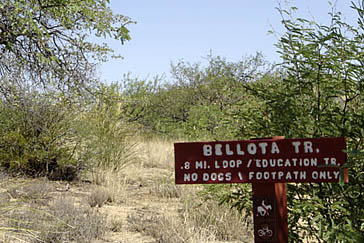 [Arizona Republic Editorial board, December 8, 2014] – There’s a big difference between idealizing a faraway river and feeling the current beneath your boat. That distinction matters to Arizona’s state parks, and the Arizona State Parks Foundation understands why.
[Arizona Republic Editorial board, December 8, 2014] – There’s a big difference between idealizing a faraway river and feeling the current beneath your boat. That distinction matters to Arizona’s state parks, and the Arizona State Parks Foundation understands why.
When city folks express support for the state parks, it represents a casual friendship. When people get out there and experience the real thing, it leads to a committed, long-term relationship — a relationship worth working to preserve and enrich.
“The more people we get into the parks, the more people will be actively interested in the parks,” says Bill Meek, president of the parks foundation board. “We need to get people out there experiencing what we’ve got.”
An engaged constituency is essential because politicians have not been good to the parks. Funding was stripped during the recession, and the current budget deficit may lead to more pain.
Lack of funding translates into at least $80 million in capital needs at the 31 natural, historic and archaeological sites that make up the state parks system. In addition to funding to keep the sites safe and well maintained, more than $200 million in capital projects have been requested to provide better experiences for visitors.
The problem is not a lack of public support. Over the years, Arizonans have shown continued support for parks in polls, through surveys and at the ballot box. In 1990, they approved the Heritage Fund, which targeted $10 million annually to the parks from Lottery revenues.
The problem is lack of public engagement. Consider this: Lawmakers stripped Heritage funding from the parks during the Great Recession while letting it continue to flow to the Arizona Game and Fish Department. Hunters and anglers form a strong and active constituency. Lawmakers didn’t ignore them.
The constituency for state parks is much broader and less actively engaged politically.
Enter an idea that could help raise money and public consciousness on behalf of these state treasures.
Verde River kayak tours run by the Verde River Institute and the parks foundation include a guide to interpret the flora and fauna, as well as stops at local communities and a tasting session at a winery cooperative.
The $200 fee includes a $115 donation to the parks foundation. Tours this fall brought in about $5,000, which will become seed money to develop a business plan to expand the tours, parks foundation Executive Director Cristie Statler told The Arizona Republic’s Mary Jo Pitzl.
Meek says if the tours are expanded, they could develop a funding stream that lawmakers could not sweep. He says parks systems around the country are using “social enterprise,” an idea that uses commercial strategies to benefit human or environmental needs. That’s the kind of creative thinking our parks need in these tough budget times.
But that’s not all.
Giving people a hands-on experience with resources they had not previously touched deepens their understanding and appreciation. It builds deep commitment. That makes them more likely to “take action and talk to their legislators,” says Doug Von Gausig, director of the Verde River Institute. He leads the river tours.
The more opportunities people have to experience the state parks, the more committed Arizonans will be to speak up for these amazing places.
Source: http://www.azcentral.com/story/opinion/editorial/2014/12/07/state-parks-benefit-engaged-constituency/20058401/



You must be logged in to post a comment.